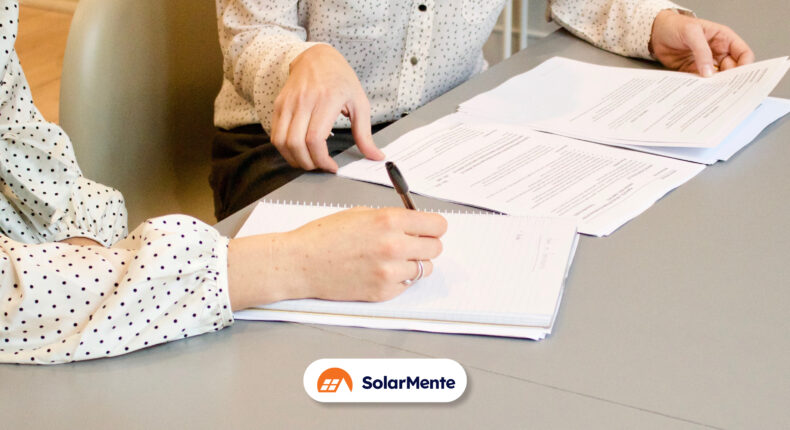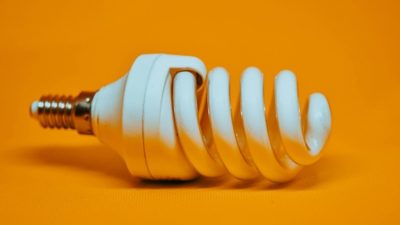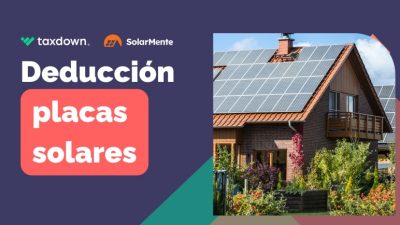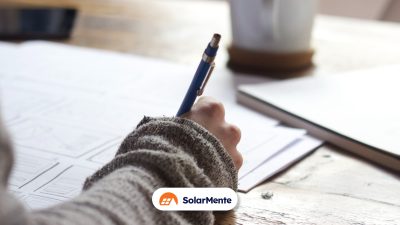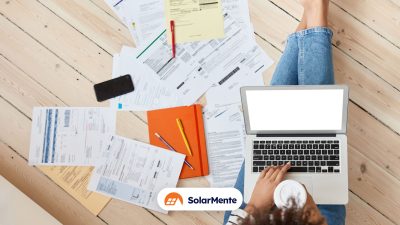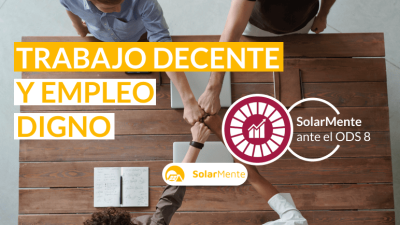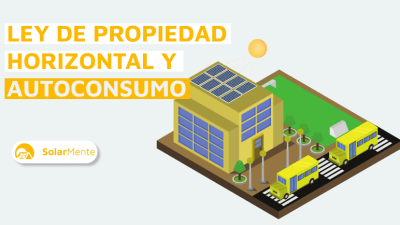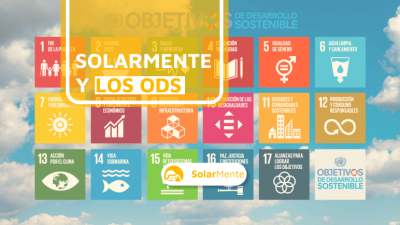Photovoltaic self-consumption installations require a significant investment, but we have several ways to reduce the cost and enjoy clean, inexpensive and inexhaustible energy.
Thanks to subsidies for solar panels, state aid for self-consumption and other specific subsidies offered by the autonomous communities, we can accelerate the return on investment.
In fact, technological development in the sector has reduced installation costs by almost 90% in the last twelve years, according to the latest annual report of the Spanish Photovoltaic Union (UNEF).
Despite all these incentives, there is still a lack of information about the advantages offered by solar energy and the available aid, as well as the changes in the regulations that promote the use of renewable energies.
For this reason, we are going to explain in detail the subsidies for solar panels available in Spain today.
Grants and subsidies for solar panels
Once you have decided to take the step towards a sustainable energy model and before starting the installation process in your home, it is important to know the government grants and subsidies of each community to accelerate the return on investment:
-
Building, Installations and Works Tax rebate (ICIO).
-
Property Tax rebates (IBI)
-
Deductions on income tax (IRPF)
-
Regional or local subsidies
-
Subsidies for self-consumption: Next Generation Funds
Building, Installations and Works Tax Rebate (ICIO)
The ICIO is an indirect tax that is levied on any work, installation or construction in which it is necessary to have a building permit, whether or not it is obtained.
The maximum available rebate is 95%. This percentage varies depending on the municipality where you live and can only be deducted once, unlike IBI.
Let’s take a brief example to make it clearer.
In cities like Madrid or Barcelona, you can enjoy 95%. On the other hand, other municipalities such as Oviedo get up to 30%.
However, the most interesting rebate is the one provided by the IBI, as it will help you to amortise the investment to a greater extent.
Property Tax Rebate (IBI)
The Impuesto por Bienes Inmuebles (IBI) is an annual and obligatory tax for the owners of real estate that must be paid to the corresponding town hall for the mere fact of owning it. In short, it is a tax rate set by each municipality.
Homes with photovoltaic installations are entitled to IBI rebates, which can be applied to up to 50% of the full amount. The variations will be different depending on what is established by the municipality and the type of property.
Moreover, some municipalities, such as La Bisbal d’Empordà (Girona), exceed this percentage, reaching up to 75%. However, it is not common to see such high figures.
In any case, the percentages can change every year and each municipality has the power to apply the conditions it considers. For example, a common limitation in most localities is to use only the rebate for dwellings.
According to the report prepared by Fundación Renovables, more than 400 municipalities out of a total of 760 with more than 10,000 inhabitants are eligible for subsidies for solar panels.
But how many years can you take advantage of this subsidy?
The times are long. Some municipalities can only deduct the tax for one year. Others are luckier and can take advantage of it for 30 years.
Is this the most common? No. Most municipalities apply a period of 3 to 5 years.
Unlike the ICIO, the IBI allows a further reduction of the amortisation time. The return on investment of the installation of the system can be reduced to 5 or 6 years in geographical areas in the north of Spain.
However, this stage can even be shortened to 3 years for installations located in the south of Spain due to the simple fact of producing a greater amount of energy thanks to the large number of hours of sunshine received annually.
>>If you do not have sufficient investment to purchase the photovoltaic system, you can opt for our solar subscription model.
This modality allows you to rent solar panels for a reduced monthly fee, taking advantage of IBI and ICIO rebates in the same way.
Income tax deductions (IRPF) for the installation of solar panels.
In the income tax declaration (IRPF), you can deduct a multitude of concepts and the installation of solar panels is one of them. In this way, photovoltaic self-consumption is encouraged in Spain.
Before talking about eligible percentages, you must meet the following requirements established by the Tax Agency in order to deduct the tax:
-
As the applicant, you must be listed as the owner of the property.
-
The installation of the solar panels must be carried out by an authorised company.
On the other hand, this deduction depends on each autonomous community. However, when you make your tax return, you can obtain a rebate of the following percentages:
-
Up to 20% of the investment with a maximum of 5,000 euros per year. By the mere fact of installing a photovoltaic system in your home or in those properties that you rent, you will receive this rebate.
-
40% of the amount invested if, in addition to the installation, we have achieved with the solar panels an energy saving of 30% of non-renewable energies in the habitual residence or if they achieve the A or B energy efficiency labels. The maximum deductible amount is 7,500 euros per year.
-
Up to 60% of the investment for actions that reduce by 30% the energy generated by non-renewable sources or obtain the A or B classification for energy efficiency in residential buildings.
In short, the deductions can help us significantly in the reduction of the investment, although the IRPF rebate depends on each autonomous community.
Specific aid from the Autonomous Communities
We have another alternative that comes from the autonomous communities. We are talking about subsidies for the installation of solar panels that are usually subject to calls for applications. This makes it more difficult to take advantage of these municipal incentives.
Despite this, it is not a concept that significantly reduces the investment period. Remember that the greatest municipal rebate will be provided by the IBI.
For example, the Community of Madrid offers a maximum subsidy of 25% of the total cost of the system.
Andalusia, for its part, has an additional 40% subsidy for self-consumption as long as the home was built before 2017, among other requirements.
Other regions, such as Navarra, also offer subsidies with a maximum deduction of 30% for both individuals and legal entities.
Aid for self-consumption: Next Generation Funds
Finally, you can benefit from aid for self-consumption with the Next Generation Funds. They come from the European Union (EU) and can be applied for until 31 December 2023.
These subsidies for solar panels from the Spanish Government make it even easier for us to enjoy self-consumption.
We can differentiate between various amounts depending on the type of installation and the power of the system.
Starting with single-family homes, the subsidies received are as follows:
-
In installations with power under 10 kWp, the amount is 600 euros per kWp and 490 euros per kWh with the implementation of batteries.
-
Installations with more than 10 kWp will receive compensation of between 300 and 450 euros per kWp installed.
For municipalities with less than 20,000 inhabitants on non-urban land and 5,000 on urban land, this aid can amount to 55 euros per kWp for the installation and 15 euros for the battery.
Collective self-consumption is also rewarded. Subsidies can reach up to 710 euros per kWp installed. On the other hand, for systems above 10 kWp, subsidies range between 535 and 355 euros.
Subsidies for solar panels by Autonomous Communities
Each autonomous community is different and has its own particularities when it comes to receiving tax incentives for self-consumption installations, according to the latest report by Fundación Renovables.
Therefore, let’s see how many provinces are eligible for IBI and ICIO subsidies. Do they all have double subsidies?
In addition, we will tell you which are the most benefited municipalities in the country and you can have an overview of the reduction of your investment.
IBI subsidies
Taking into account the IBI rebates applied to municipalities with more than 10,000 inhabitants, let’s see which are the provinces that reach the highest percentage in a longer period of time.
Note: move the mouse over each province to see the exact percentages.
In summary, the provinces or autonomous cities with the highest percentage of IBI are:
| Province/ Autonomous City | Percentage of population benefiting from the IBI |
| Avila | 100% |
| Soria | 100% |
| Ceuta | 100% |
| Teruel | 100% |
| Palencia | 100% |
| Zaragoza | 93% |
| Salamanca | 93% |
| Cordoba | 92% |
| Madrid | 90% |
| La Rioja | 89% |
ICIO rebates
46% of the municipalities studied that offer a rebate on the ICIO grant the maximum rebate and do not present restrictive conditions of any type.
On the other hand, there are 20 municipalities (9%) that offer this aid for self-consumption installations, but they do so with conditions that severely limit access.
| Province/ Autonomous City | Percentage of the population benefiting from IBI and ICIO |
| Ceuta | 100% |
| Aragón | 91% |
| Catalonia | 85% |
| Balearic Islands | 76% |
| Madrid | 67% |
Anyway, here you have the list of provinces to know the available subsidies in your residential area:
-
Subsidies for solar panels in Tarragona
-
Subsidies for self-consumption in Lleida
What documentation does the Generalitat de Catalunya issue once the installation has been carried out?
The Generalitat has to issue three documents related to your photovoltaic installation:
1️⃣ CIE. Electrical Installation Certificate. This document certifies your photovoltaic installation.
2️⃣ RAC. Self-consumption Register of Catalonia. This document is the proof that you are registered in the self-consumption register of Catalonia, which means that you have a photovoltaic installation.
3️⃣ RITSIC. Register of Technical Installations and Industrial Safety of Catalonia. Another certification of your photovoltaic installation in a different register.
This process does not require any action on your part. Once we receive them, we will send them to you instantly. With them we will be able to apply for the IBI rebate and you will be able to apply for the compensation of the energy surplus from your electricity company.
Take advantage of grants and subsidies for solar panels in Spain.
Grants and subsidies for solar panels are a good option to reduce investment costs in the installation of self-consumption. In this way, we approach solar energy, seeing it as an accessible alternative to generate energy through our modules and reducing dependence on the traditional electricity grid.
They allow us to advance in the development of renewable energies towards a sustainable energy model that allows us to take care of the environment and curb high household energy costs.
To do this, use our savings calculator and see how much your bill will decrease each month.

